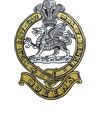
The Queen's Regiment
End of an Era
The last words....
"It is not in the interests of the army that further explanations of the reasons behind the choices should be made, and I regret therefore that I shall not be giving you an answer."
The period of the Queen’s Regiment’s life was one of the most momentous in our country’s history; indeed, in the history of the world. it saw revolutions in technology, wars, unprecedented disasters and starvation.
Perhaps the most important of all for the Regiment, the end of a political system which had sought, and at one time threatened, to dominate the world. when it was decided to publish the history of the Regiment no-one in our country envisaged, or certainly predicted, the end of the Berlin Wall and the disintegration of the USSR and the Communist System. But with these events and the consequent end to any immediate and obvious threat to our nation, it became clear that there would be reductions in Britain’s Armed Forces.
By 1991 The Queen’s Regiment was an undoubted success story. Although it had been saddened to lose its 4th (Middlesex) Battalion in 1970, it consisted of three regular and two and two-thirds territorial Battalions.
Its overall strength, despite government restrictions on recruiting, was over 1,500 regulars, 1,400 territorials and some 3,000 Queen’s badged cadets.
In order to celebrate the silver jubilee of the Regiment it was decided to produce a history with the title "The Queen’s Regiment - the first 25 years". Such was our faith in the future! how was it then that after only 26 years this proud Regiment should have ceased to exist.
A Government study known as "option for change" was initiated and shortly after the end of the gulf war its results were announced
To the utter disbelief of the Regiment we learned that not only were we to lose a battalion but, in addition, we were to be amalgamated with a single Battalion Regiment with which we had nothing in common and no associations, despite many requests to Ministers, including the Prime Minister, the Chief of the General Staff and other members of the Army Board.
No explanation was ever given for this unjust and unwarranted treatment. Our demands for justice, or at least some explanation to pass on to our soldiers, fell on deaf ears and the final comment on this tragic affair came from the chief of the general staff when he wrote to me on the 13th September 1991:
The Queen's Regiment had expected to lose one of its regular Battalions and anticipated some reduction in strength of its territorials. what really hurt was that, alone amongst the large Regiments, the Queen’s was to be amalgamated and would therefore cease to exist.
At the stroke of a pen the vision and faith of our founding Colonels had been betrayed and the agonies endured over a quarter of a century to create one Regiment (PWRR) from four had proved in vain. the older members of the Regiment realised that we would have been no worse off and probably much better off, to have remained "small" in 1966.
What led to the decision to destroy the Queen’s Regiment? Certainly not manpower problems, for in 1992 the Regiment had more than 250 men surplus to the needs of a two battalion regular Regiment and this despite recruit capping. no, the decision was made in order to protect certain Regiments which either had senior officers on the army board or officers who were friends of board members.
Amalgamation
The Amalgamation of The Queen's Regiment with the Royal Hampshire Regiment to form The Princess of Wales's Royal Regiment
In the final analysis a Regiment of over 3,000 men ceased to exist so that some 350 members of the Royal Hampshire Regiment could join a new Regiment composed overwhelmingly of Queensmen.
Sadly, these Royal Hampshires, unwanted by their own Prince of Wales Division, were also sacrificed so that others should survive.

